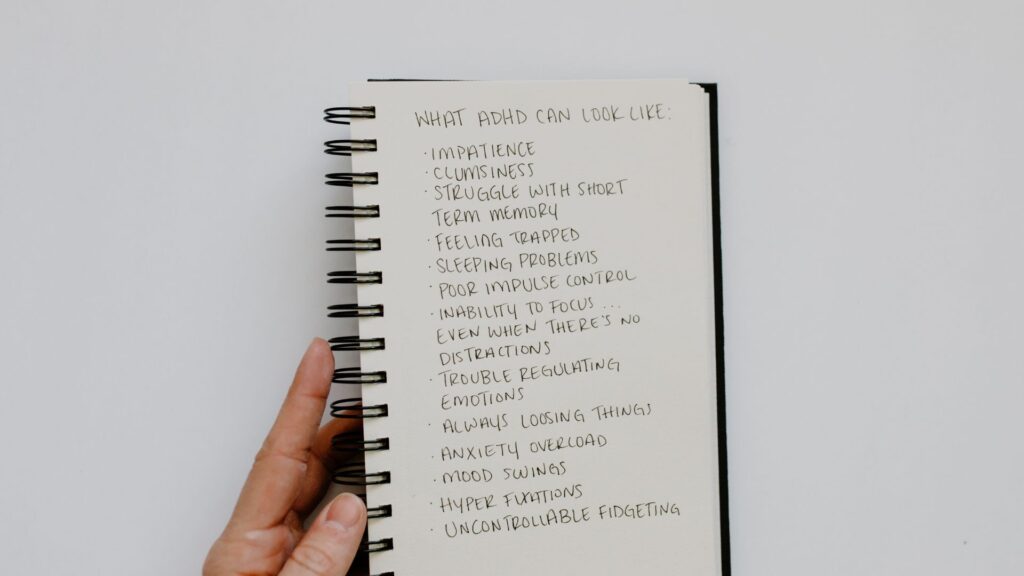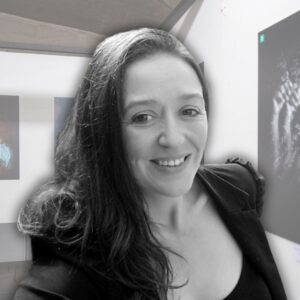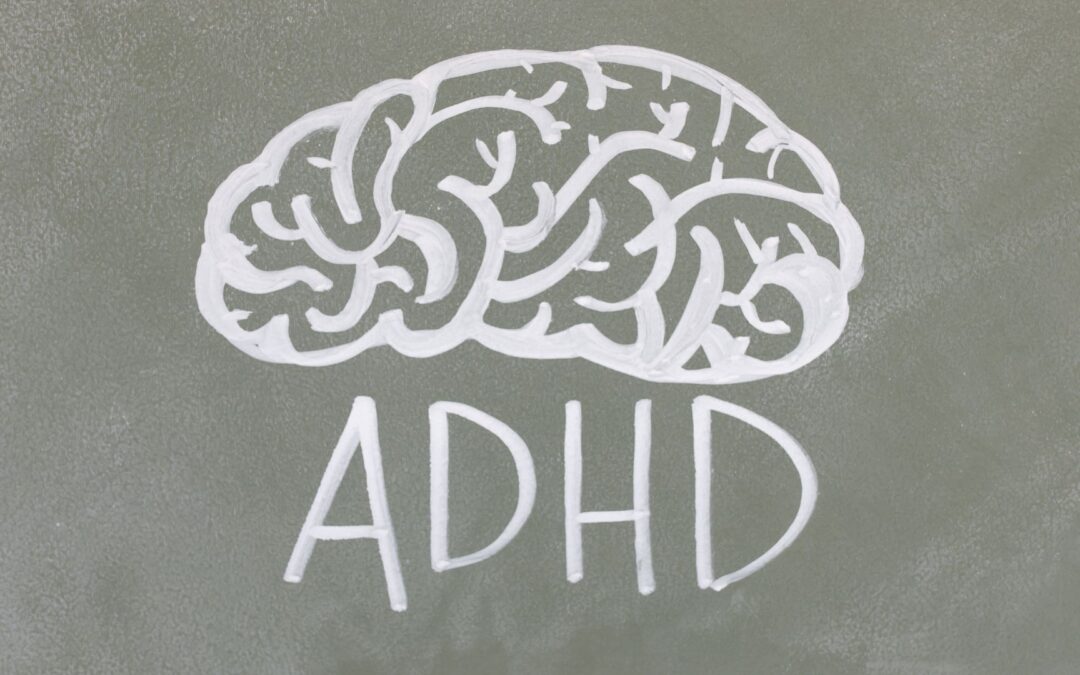We grow up in a world we often feel we don’t belong in, so we create one for ourselves. From ink on a page to sculpting out of clay, we bring our creativity into this world.
For artists with ADHD (Attention Deficit Hyperactivity Disorder), creativity often flows in bold, vibrant waves. But behind the masterpieces and moments of hyperfocus lies a unique set of challenges that many neurotypical peers may not see.
Still, with the right tools, understanding, and support, artists with ADHD can thrive – not in spite of their neurodivergence, but because of it.
Artists with ADHD: Creating a World Where We Belong
We grow up in a world that often doesn’t feel made for minds like ours – fast, curious, and constantly overflowing with ideas.
For those of us with ADHD, that feeling of not quite fitting in can start early. Traditional systems ask for structure, focus, and quiet compliance – all things that can feel out of reach when your brain moves at lightning speed in every direction. But instead of shrinking to fit, many of us choose to create. We don’t just find a place for ourselves – we build one, through our art.
Art becomes our language. It’s how we process complex emotions, give form to scattered thoughts, and find peace amidst internal chaos. In creating, we discover a sense of belonging that the outside world often withholds. For artists with ADHD, art is more than a hobby or a job -it’s a form of survival and self-definition.
Here are a few famous artists who are speculated to have had ADHD:
- Leonardo da Vinci
- Vincent Van Gogh
- Pablo Picasso
Knowing that even these great creatives may have shared similar struggles can be comforting. Their legacy reminds us that neurodivergent minds have always shaped art and culture in extraordinary ways.
How Artists with ADHD Navigate Neurotypical Systems
For many of us, childhood and early education can be filled with friction. Being labelled “distracted,” “too much,” or “unfocused” is a common experience. School environments often reward consistency and linear thinking, while we process the world in bursts of inspiration, connection, and nonlinear ideas.
These early experiences can plant seeds of self-doubt. But they can also be the start of something transformative – a search for expression that leads straight to creativity.
Outside of school, artists with ADHD often find alternative paths to self-expression. They may experiment with performance, fashion, music, or street art – any outlet that allows for self-led exploration and unfiltered expression. The constraints of a neurotypical system often push us to break the rules and redefine what success looks like.
Shaparak Khorsandi, diagnosed in her 40s describes this sensation vividly:
” Discovering in my late 40s that I have ADHD was a bit like how … Tarzan felt when he found out he was a human and not a chimpanzee … I know how it feels … to be so different to the other chimps.”
Why Art Is a Lifeline for Artists with ADHD
Art offers what many systems don’t: freedom, exploration, and the chance to channel energy in a meaningful way. Whether it’s ink on a page, sculpting with clay, or designing an immersive installation, creative practice allows us to translate inner chaos into external beauty.
In moments of making, many of us find something elusive in everyday life: focus.
The world quiets. Thoughts align. Time bends. What some call “hyper-focus” – often considered a hallmark of ADHD – becomes an incredible gift when it meets creativity.
This state of flow is more than a productivity hack; it’s a moment of wholeness. When creating, ADHD artists often report a rare sense of being fully present. It’s not just about making art – it’s about reclaiming clarity, control, and self-confidence.
Creative work also acts as an emotional regulator. It offers catharsis, reflection, and a constructive outlet for intense feelings, such as frustration, joy, anxiety, or grief. This emotional alchemy turns what some see as disorder into a deep and compelling voice.
Creative Superpowers of Artists with ADHD
Let’s reframe the narrative: ADHD doesn’t diminish creativity – it can supercharge it. These strengths show up in everyday creative work:
-
Hyperfocus: The ability to enter deep, immersive states where time disappears and creativity flows. For example, you might paint for hours without realising it.
-
Divergent Thinking: Generating original, unexpected ideas that set your work apart. This might look like combining techniques or materials in ways others wouldn’t consider.
-
Resilience: Bouncing back from setbacks and adapting your process, like shifting to a new medium if you feel stuck.
How Artists with ADHD Work with Their Brains

Of course, there are real challenges. Executive dysfunction, time blindness, and difficulty with structure can make an art career feel overwhelming. But artists with ADHD have also developed incredible systems of resilience. From visual planners and timers to body-doubling and flexible routines, there are ways to shape a practice that works with your brain – not against it.
-
Break tasks into small steps to avoid overwhelm, like dividing a large painting into stages.
-
Use visual tools like Trello, sticky notes, and colour-coded calendars to track progress.
-
Practice body doubling by working alongside a friend or joining an online co-working group.
-
Follow energy patterns: Work when you feel most focused, whether early morning or late at night.
Other helpful strategies include:
- Pomodoro technique (25 minutes focused, 5 minutes rest)
- Time-blocking using colour-coded calendars
- Creating “start rituals” (e.g., music, coffee, candles)
Sometimes the biggest challenge is simply beginning. Start small and allow momentum to build naturally.
Building a Creative Life That Works for Artists with ADHD
Being an artist with ADHD isn’t about fitting into the existing mold. It’s about crafting your own space, voice, and rhythm – and trusting that the world needs what you have to offer.
Your art is more than a product – it’s a portal. Through it, you bring others into your world, a place full of color, intensity, and feeling. And that’s not just beautiful – it’s powerful.
-
Trust your creative instincts and lean into what excites you.
-
Make your own systems that fit your brain and adapt as needed.
-
Connect with others who understand your journey and can offer encouragement.
Remember, your art has value – and so do you. Share your story and inspire other artists with ADHD.
Real Talk: Give Yourself Grace
It’s easy to feel behind, especially in an industry that prizes productivity and constant output. But art is a lifelong journey, and ADHD is not a roadblock – it’s a different path. Be patient with your process. Allow yourself to learn, experiment, and rest without guilt.
“I once wrote a novel in a week because I was so hyper-focused. But I’ve also spent months struggling to return a single email. ADHD is like the tide – it comes and goes. I’ve learned to work with it, not against it.”
Perfectionism, fear of failure, and burnout are common among ADHD artists. Give yourself grace. Progress isn’t always linear, and your creative voice will evolve over time. Rest is part of the process.
Karen Van Hoey Smith – Art Mentor and Neurodivergent Delight

Karen Van Hoey Smith, Art Mentor at the VAA shared her take as a neurodivergent navigating the art world:
The art world is always changing, but in the past five years, it feels like it’s evolving faster than ever. This is the perfect moment to challenge the norms.
Why are all the forms and applications designed to be so neurotypical in a massively neurodivergent pond? Let’s change this!
Step into your truth –
Until only a few years ago, I believed that if I heard the words “enthusiastic” or “passionate,” that it meant “shut up Karen.” I would beat myself up about this and modify my behaviour. But this is me – this is how I communicate. None of it is fake.
I’m in constant awe of the world. Little things fill me with wonder and joy. As a mentor, I know that’s not only okay – it’s powerful. I love discovering artists’ passions and fears and being the person who believes in them fully.
When I first heard the phrase “Think out of the box” I was confused.
“I’m in a box?” – wait. Can I decorate?
Oh hang on, if I’m in a box are there boxes all around me?
Is out of the box just in someone else’s box?
That’s why I surf on hexagons.
My art is the ability to look at a situation and see the gaps instantly. To take your idea, stretch it, expand it, blow it up – then help you gather all the pieces and concentrate them into something clear. And then, together, we set goals that feel achievable and fun, with deadlines to keep the momentum going.
I can come up with a million ideas a second, and I love watching them incubate. The difference is, you make them happen. And I admire that more than I can say.
Living With ADHD Paralysis and Rejection Sensitive Dysphoria – The Author’s Personal Perspective
 As someone diagnosed later in life, I know firsthand how raw and overwhelming it feels to always be the one who seems different. ADHD paralysis can feel like quicksand. The mind races with ideas, but the body just won’t move. Simple tasks like replying to a message or getting up from bed feel impossible, and the loneliness of it all can be crushing.
As someone diagnosed later in life, I know firsthand how raw and overwhelming it feels to always be the one who seems different. ADHD paralysis can feel like quicksand. The mind races with ideas, but the body just won’t move. Simple tasks like replying to a message or getting up from bed feel impossible, and the loneliness of it all can be crushing.
Rejection Sensitive Dysphoria hits just as hard. It’s not just a little sensitivity; it’s a deep ache that makes me question my worth. One small comment, an unread message, or my own self-criticism can send me spiraling into shame and self-doubt. On the outside, I may look composed and confident, but inside, I’m fighting to hold it together.
But even in these dark moments, I’m learning that this doesn’t define me. It doesn’t define us. Our brains feel everything more intensely -and yes, that can hurt – but it’s also what fuels our creativity, compassion, and drive. We learn to meet paralysis with patience, face RSD with self-compassion, and keep going, even when it feels impossible.
The Dr that diagnosed me commented he thought it was a small miracle I managed to graduate university unmedicated – I smiled and told him he underestimated my determination. Years of treading water for most of us leaves us with this incredible drive to succeed no matter what.
That determination and drive have seen me through so much – from losing my daughter’s father during my first year of university to graduating last September as a single mum. ADHD hasn’t held me back; if anything, it’s made me even more determined to survive and succeed despite the challenges.
If you’re living this too, please remember: you are not alone. We have the resilience to rise, the creativity to make something beautiful out of the mess, and the courage to keep showing up. And that is something worth celebrating.
As people with ADHD, we also have to learn – sometimes more than others – to be kind to ourselves. To buy ourselves flowers just because we deserve something beautiful. To treat ourselves with the same patience and compassion we so willingly give to everyone else.
 Tip for Self-Compassion
Tip for Self-Compassion
I was once asked if I would speak to my child self the way I speak to myself now. That question stopped me in my tracks. It taught me to be gentler with my thoughts, to picture the younger me, and to protect her. Whenever self-criticism creeps in, I try to treat myself with the same kindness I would offer that little version of me.
Community & Support Make All the Difference
Whether it’s through an ADHD support group ( I have found great ones on Facebook), an artist mentorship, or simply following neurodivergent creators on social media, finding others who “get it” can be both validating and inspiring.
Community offers more than camaraderie – it provides a mirror. Seeing others who share your struggles and strengths can shift how you see yourself.
It reminds you that your path is valid, your brain is not broken, and your art matters.
Are You an Artist with ADHD?
We’d love to hear your story, your tools, and your triumphs. Reach out on Instagram @visualartistsassociation or tag us in your journey. Let’s keep the conversation going and uplift each other in this vibrant, neurodiverse art world.


 Tip for Self-Compassion
Tip for Self-Compassion